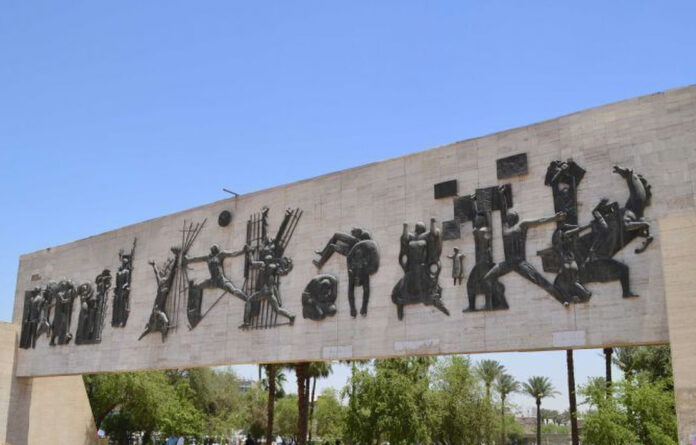Haider Abdel-Murshed – Researcher
Introduction:
It is not possible to talk about national security in isolation from the idea of the state, its political system, and its operations as a whole. National security is the comprehensive characteristic of everything related to the entity of the state, and its basic goal for which it was found, whether with the first embryonic idea of security and the state, up to the development of the concept of security into comprehensive national security with its complexity and composition.
This paper focuses on an important vocabulary related to one of the processes of the political system. It flows through public policies taken by the government to enhance the image of the state and consolidate its place in the collective memory. Assuming that the strengthening of patriotic symbolism leads to the consolidation of the moral foundations of the state in the collective feeling. Which in turn enhances the ability of the political system to use moral support from society to succeed in its policy, and to strengthen its ability to fulfill its obligations regarding national security.
Symbolic Politics and The State
Symbolic policies are defined as (the creation and use of political symbols that support a sense of responsible citizenship, nurture a sense of national loyalty, motivate citizens to accept sacrifices and hardships, and offer everything valuable for the sake of the nation’s prosperity). This definition shows that there is a collective memory-making process and that to strengthen the state’s narratives, it is sometimes intended to create a symbol, even if it is not present in the history of the state and the heritage of its nation.
It goes without saying that the state, as a concept established to maintain security, is based on an established social contract, and this social contract, and as much as it focuses on a basic issue related to the creation of the state in order to achieve security, this contract is ultimately based on the system of values in which the contracting parties participate. Constitutional studies mention that the constitution, as the basic law that defines the state and regulates its affairs, is based on what is called (the basic enacted law), which is what society agrees on and they contract to respect.
This basic enacted law includes a wide range of material and moral elements, values, beliefs, traditions and customs, and heritage in general, whether oral, material, or written. These elements include symbols, historical stations, and heroic people, whose role is to strengthen the nation’s power, consolidate its self-respect, and link it to its state and political system.
As far as the nation is linked to its symbols, and with the ability of the state and its political system to sustain the presence of that established symbol in a way that does not impede progress towards the future while preserving the identity and independence of the nation, to the extent that this goal is achieved. The success of government policies – which in general constitute a tributary to the state’s national security – is more likely to achieve public satisfaction and obtain it, as long as public policy is linked primarily to achieving public satisfaction.
Symbolic policies take various ways through which they show artistic monuments, architecture, style of clothing, names, arts, music, poetry, military parades, manifestations of state power and prestige, and many other things.
These policies represent an invisible moral link that binds the individuals to their state and enhances their citizenship, and they are not activated easily and automatically. Rather, it is based on many intertwined and complex factors, starting from the first moment of the establishment of the state, agreement on it, acceptance of the political system emanating from it, and the construction of the legal structure adopted by the system to manage public affairs, in a way that makes the individual find that accepting it is a condition of his citizenship and that his citizenship is precious and worthy of sacrifice.
Then it is consolidated through the mechanisms and channels of upbringing, assuming that upbringing represents the process by which values are transmitted across generations, according to certain channels represented by the family, peer groups, school, means of communication, the media, and everything that technology includes within this scope.
For example, if we talk about historical monuments, the process of interacting with them requires historical knowledge and upbringing that students receive at school, showing them the history of their country in a clear way, glorifying the achievements of the past, and enhancing feelings of national pride. These historical stations are consolidated within a continuous indoctrination process through multiple channels, such as the monuments to national heroes, poets, artists, scientists, and creators, and monuments that talk about the country’s revolutions and its construction path. It is noted, for example, in this context that established countries, to the extent that they adopt historical curricula in their schools, reinforce those curricula with field visits to museums and memorials.
It is self-evident that the issue of national upbringing is directed primarily at the new generation, and it may not be effective for those who have advanced in age in light of the multiple crises that a country like Iraq has witnessed. This means the necessity of paying attention to the issue of symbolic policies within the educational process in Iraqi schools, in a way that enhances their political formation in the way of promoting active citizenship and a sense of patriotism.












